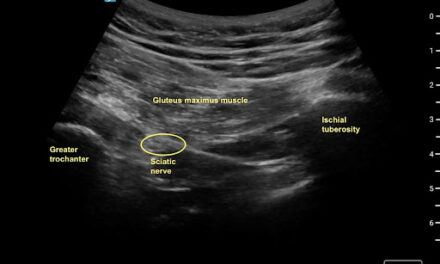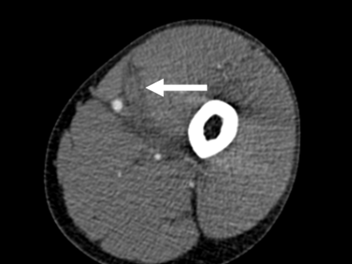Kratom Part II: Updates for the ED Provider on a Substance Skyrocketing in Use
A patient presents to your ED with a chief complaint of non-stop vomiting over the last day. She says she was sore from working in the yard all day and tried a pain reliever her relative swears by. Is this liver failure from acetaminophen overdose? Cyclic vomiting syndrome from marijuana? The substance is revealed to be… kratom.
Kratom is an emerging substance that patients are turning to for relief from opioid addiction. It is becoming apparent that emergency physicians need to learn more about this substance before it shows up in your ED, so we are continuing the kratom discussion from the last issue of EMpulse.
Kratom refers to derivatives of Mitragyna speciosa, a tree native to southeast Asia. Leaves of this tree can be chewed or prepared in several ways for ingestion: ground into an extract, dried and crushed into powder, or drank as tea. [1] Its use traces back to the 1800s by indigenous peoples in Malaysia and Thailand as an opium substitute. [2] Since the 1960s, biochemical studies have isolated more than 25 alkaloid compounds from Mitragyna leaves, the major component (66%) being mitragynine, with paynantheine (9%) and speciogynine (7%) also being significant components. [2] Mitragynine has μ-, κ-, and δ-opioid receptor agonism. [3] Therefore, kratom is considered to be within the class of opioid substances. Uniquely, kratom has been documented to have cocaine-like stimulant effects at lower doses and opioid-like sedative effects at higher doses.4 An overdose toxidrome has been described with sweating, dizziness, nausea and vomiting. Kratom-induced liver injury has been described in various cases. The substance is habit and tolerance forming, leading users to require increasing dosages as they develop addiction. Chronic overuse may lead to tremors, anorexia, urinary frequency, seizures, psychosis, and a withdrawal syndrome of aggression and insomnia.
In the setting of the 21st century opioid epidemic in the Western World, kratom has seen its use skyrocket. The substance has a cult-like following of users on internet forums and throughout the country who use kratom for pain relief, or have claimed to successfully quit an opioid addiction by substitution with kratom. Kratom can be purchased on the internet, with many suppliers easily found on an internet search for “buy kratom.” Kratom is served in tea shops and found in tobacco and supplement stores. In 2016, the DEA served notice of intent to place mitragynine on the Schedule I controlled substance list.5 Kratom vendors and advocates lobbied vigorously against the illegalization of kratom, and even filed suit, [6] resulting in the DEA withdrawing its notice and categorizing the supplement as a “drug of concern.”
Patrick Leffers of the Florida Poison Information Center first discussed the emergence of kratom in EMpulse Magazine: Winter 2016. [7] Since that time, kratom has continued to rapidly gain popularity among community groups searching for opioid alternatives and on the internet. In fact, an analysis of poison control center calls between 2011-2017 determined 65% of the 1,807 kratom-related phone calls occurred between 2016 and 2017.8 Kratom is now discussed in the opioid chapter of the 9th edition of Tintinalli’s Emergency Medicine. [4]
The Department of Health and Human Services in 2017 requested the DEA reconsider its withdrawal of notice to place mitragynine and 7-hydroxymitragynine in the Schedule I DEA list. It is illegal in Alabama, Arkansas, Indiana, Tennessee, Vermont, Wisconsin and Washington D.C. – in addition to numerous municipalities with local laws regarding the substance. In 2019, the FDA issued a warning statement regarding use of kratom due to safety concerns and informed the public of several major seizures of kratom materials from importers during a ban on imports. Drs. Fluyau and Revadigar of the psychiatry departments of Emory University and Columbia University, respectively, published a risk evaluation of kratom as a potential analgesic, stating its potential benefits are outweighed by its “severe and real health hazards” with “clinical, psychological and medical manifestations.” [9] The first comprehensive review article attempting to analyze the evidence behind kratom-related liver injury was published this year. It concluded that there is still a paucity of data on the subject, but the evidence does support liver injury in a mixed cholestatic and hepatocellular picture.10
What is clear: kratom’s use has skyrocketed since 2016, and EM providers should familiarize themselves with the presentations of acute and chronic toxicity, as well as withdrawal syndromes. Patients may be counseled on what is known and unknown about this substance, as well as its tenuous legal status in many areas. Your area poison control center is available to guide management of any kratom-related clinical scenario at 1-800-222-1222. ■
Image: A stock image of a logo, ready for kratom businesses to use.
© Patria Ari / Adobe Stock
References
- Hassan Z, Muzaimi M, Navaratnam V, et al. From Kratom to mitragynine and its derivatives: physiological and behavioural effects related to use, abuse, and addiction. Neurosci Biobehav Rev. 2013;37(2):138‐151. doi:10.1016/j.neubiorev.2012.11.012
- Jansen KL, Prast CJ. Ethnopharmacology of kratom and the Mitragyna alkaloids. J Ethnopharmacol. 1988;23(1):115‐119. doi:10.1016/0378-8741(88)90121-3
- Warner ML, Kaufman NC, Grundmann O. The pharmacology and toxicology of kratom: from traditional herb to drug of abuse. Int J Legal Med. 2016;130(1):127‐138. doi:10.1007/s00414-015-1279-y
- Love JS, Perrone J. Opioids. In: Tintinalli JE, Ma O, Yealy DM, Meckler GD, Stapczynski J, Cline DM, Thomas SH. eds. Tintinalli’s Emergency Medicine: A Comprehensive Study Guide, 9e New York, NY: McGraw-Hill; http://accessmedicine.mhmedical.com/content.aspx?bookid=2353& sectionid=220744738. Accessed May 15, 2020.
- Withdrawal of Notice of Intent to Temporarily Place Mitragynine and 7-Hydroxymitragynine Into Schedule I, 81 Fed. Reg. 70652-70654 (October 13, 2016).
- Silverman L. Kratom gets reprieve from DEA’s Schedule I list. CNN. www.cnn.com/2016/10/17/health/kratom-dea-schedule-i-comments. Published October 17, 2016. Accessed May 16, 2020.
- Leffers, P. Kratom: The All-Natural Opioid “Alternative”? EMPulse Magazine. 2017;23(4):15.
- Sara Post, Henry A. Spiller, Thitphalak Chounthirath & Gary A. Smith. Kratom exposures reported to United States poison control centers: 2011–2017. Clinical Toxicology, 2019;57:10, 847-854, DOI: 10.1080/15563650.2019.1569236
- Fluyau D, Revadigar N. Biochemical Benefits, Diagnosis, and Clinical Risks Evaluation of Kratom. Front Psychiatry. 2017;8:62. Published 2017 Apr 24. doi:10.3389/fpsyt.2017.00062
- Schimmel, J., Dart, R.C. Kratom (Mitragyna Speciosa) Liver Injury: A Comprehensive Review. Drugs 80, 263–283 (2020). https://doi.org/10.1007/s40265-019-01242-6
This article is part of the following sections:
Samantha manages fcep.org and publishes all content. Some articles may not be written by her. If you have questions about authorship or find an error, please email her directly.







